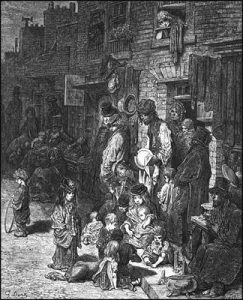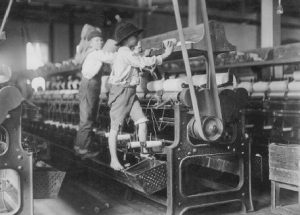
It was in the nineteenth century when the world witnessed a large growth in the overall population of Great Britain. It was noted that by the time the nineteenth century came to an end, the population grew to about three times than the population which was noticed at the beginning of the nineteenth century in Great Britain. No specific reason for this growth in population is known but there are many considerations taken up, which might lead to the cause of such an increase in the population in over the century. The ideas of such include children surviving infancy, immigration, larger families, people living longer number of years, situation of unemployment in the country and also the large number of the immigrants which came from Ireland.
Growth of the Towns and Cities
It was due to the effect which was laid upon by the industrial revolution that the population within the country considered to be whole increased, which also led to the growth of the same within the cities and the towns. Many people came into the cities and towns of Great Britain in search of employment and there were also many other people who came into the cities and towns of Great Britain in order to have fresh start to their life and have a better lifestyle than before.
The Hunt for Employment
There was a big scramble and fall back of the available employments in Great Britain because of basically two major factors. These factors are the number of immigrants, both within the country and from outside and the explosion of the population. Due to this boom in the population within Great Britain, there were both unskilled as well as skilled workers in huge numbers who were looking for employment.
This resulted in the wages of workers to become very low, construing them at such a level which were barely or just above the level of subsistence. All this again, at a point of time, resulted in the available employment to dry off or employment became seasonal. This again resulted to men being laid off.
This issue further resulted in a poor lifestyle as, when men had work, their wages were so low that they hardly could deposit anything under savings. Thus, this entire circle became a cascading effect right from the boom in the population growth within Great Britain.
Rise of Child Labour

During this specific time, the numbers in child labour increased. Family members slowly started looking forward towards their children and expected them to help to add up to the family requirements. This made children work.
Children often got indulged in many dangerous jobs where the wages were even very low. They had no other option but to do the work in order to help their families fight the difficult time. Some examples of such child labour are, children selling cheap goods like flowers, match boxes and other such goods, children of both genders, that is, young boys and young girls working in coal mines, children working under machineries to in purpose of cotton bobbies retrieval, etc.
The Shortage of Housing
As discussed earlier, there are two main factors affecting this entire scenario in respect to availability of employment. First factor is low wages and the second factor is scarcity of employment. These two factors led to people wanting to live near their job location or near their office or factory, etc. This further led to a shortage of housing for the people of Great Britain. Due to shortage of available houses and increasing demand for houses, the price of houses became expensive. Thus, this all further lead to conditions of extensive overcrowded area.
The Rise of Slum Housings
It was obvious that the number of slums will increase. The number of slums also increased in two ways. First, because of the lack of availability of houses. Second factor is, though there were availability of houses, the houses, especially given out on rent were not maintained in a proper condition.
Destitution
Destitution and starving were two severely impacted causes of death in the nineteenth century. There was also a case noted reflecting this problem. In the year 1850, a man aged about 38 years old died and the dead body was described as nothing but a bit more than a skeleton. The child was described as a skeleton infant and the mother was nothing but what we describe as “the very personification of want”.
Children Committing Crime
Many children affected of destitution started to live their life by stealing. The respected Victorians back then did seem this to be a rising threat for the society. Lack of employment and low wages led to such activities of stealing by the children.
It did appear later that there were many agencies that were aware of the poverty which was laid through in the Victorian Era. This sheer scale of the agencies being aware was very overwhelming. There were many contemporary attitudes brought forward in order to deal with such difficulties.